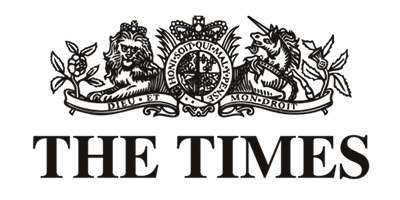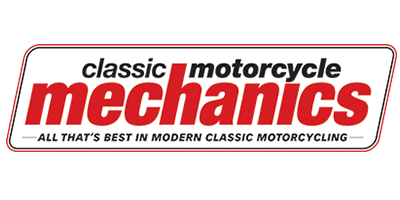I wanted to understand more about my Honda CB750F2 Phil Read Replica, as it holds such an interesting and important place in motorcycling history, as you can read here. There are only 35, of the original 150 machines, built left in existence. That makes this classic motorcycle one of the strongest investments as the world understands what this motorcycle means and its place in motorcycling history.
In brief, not only did it pave the way for the race replicas of the 1980s, such as slab side GSXRs, it also indicated that there was a market for homologation specials such as the RC30 as well. But was this a happy accident, or was it a true design experiment by a very conservative Japanese manufacturer? I have researched this by talking to Colin Seeley, who built these machines for Honda Britain and even tried to track down members of staff from Honda Britain at the time, but have not been able to find any. So if anyone who worked there at that time, and remembers the project, is reading this please get in touch as I am always ready to learn more.
All motorcycle manufacturers have been pretty conservative, it’s only now that Triumph have given in to building a bobber straight from the factory. Back in the 1970s most motorcycle owners in the UK would ditch their air box, change the exhaust, add ace bars and rear sets and make like Barry Sheene as soon as their bike left the showroom. However, this was not the case in the rest of Europe. Most customers kept their bikes bog standard, unless they went racing on them. So what possessed Honda to take 150 brand new CB750F2s, add a hand made alloy petrol tank, a custom made very loud exhaust system, ace bars, rear sets, a single-ish race seat, a full fairing, a custom Honda race paint job, Girling shocks and many little detail changes? They then proceeded to sell them at a heavily increased price over the stock CB750? Did the factory know, as the UK importer- Honda Britain, was then independent of Honda Japan?
The truth was, as Colin Seeley explained, Honda Britain were stuck with a load of CB750F2s that just weren’t selling. They, and most of the Honda importers around the world, were stuck with an out-dated and uncompetitive motorcycle. The SOHC 750 engine had been in service for nine years and was getting leggy to say the least. Kawasaki had their Z1000, Suzuki had re-written the rules with the new GS1000 and Yamaha had just launched their XS1100, so the CB750 just had no real answers for the demands of the large capacity market. Honda had also just released the six cylinder CBX1000, but that wasn’t a great seller due to its enormous price tag. With Honda Japan’s consent, Honda Britain approached Colin Seeley to design and build a race replica of their TT winning machine that Phil Read had just ridden to glory at the TT in 1977. It was a clever move, as the CB750 was slow compared to its competitors. It was the Mick Grant to Yamaha and Suzuki’s Kenny Roberts and Barry Sheene. So Honda Britain decided to dress their slow-selling machines up as something which looked like Phil Read’s 1977 TT winner. It was to remind British customers that “everyone is a winner with Honda”, even though there were faster machines available from Honda’s competition.
So, in 1978 the first ever fully faired, race replica available from a Japanese motorcycle importer was introduced to the market. They started selling and it worked. Apparently the factory were not against this and watched on with interest, but at the end of that year they fell out with Phil Read and they built and sold only 150 of the planned 500 units. So Honda instructed Colin Seeley to build a further 300 units for 1979, but to remove Phil Read’s name from the bike, most of the graphics and to add either blue or red striping over a white paint job to exactly the same bike and created the Honda Britain. Although a highly interesting and collectible classic motorcycle, it didn’t look as good, or have that race replica aggression. Amazing how a paint job and stickers can change a machine’s place in history. That is not to say that a Honda Britain is not a highly desirable classic motorcycle, just that there are twice as many and they don’t look quite as naughty as the Phil Read Rep. But that is just my opinion.
[Best_Wordpress_Gallery id=”52″ gal_title=”Phil Read Rep Blog”]
So the Honda factory watched on carefully as the race replica machines started to sell and their stock levels of CB750F2s dwindled in the UK. Perhaps this gave birth to the idea of dressing the ill-selling CBX1000 up as a tourer? Perhaps it gave Honda the courage to allow Craig Vetter to “dress” their Goldwing, which made it into the factory dresser. What is certain is that the Phil Read Replica and the Honda Britain demonstrated that thinking a little more radically would help Honda to sell more motorcycles. Even Suzuki took a leaf out of their book with the GS1000S Cooley Replica and Kawasaki with the Eddie Lawson Replica. So the truth is that Honda probably built the Phil Read Replica as an experiment to test the market, but primarily, they built it to shift a load of Honda CB750F2s they were stuck with. And it worked.
If you want to know what one of these Phil Read Replicas is like to ride, then watch this space, as I’m about to sort the brakes out on mine and start riding it more regularly. I can tell you that they’re heavy and the exhaust sounds absolutely fantastic, but all that’s for another time. One more thing is sure, the Honda Phil Read Replica is a very rare classic motorcycle indeed. They will become very desirable machines among classic motorcycle enthusiasts. As there are only 35 left of the original 150 built by Honda Britain, they are a very rare classic motorcycle indeed, with an incredible place in motorcycling history. As they were only available in the UK, as the global market stats to become aware of their existence, then these will be a stunning sleeper of an investment in the classic motorcycle world.
- Most collectible Ducati 916 SP - June 20, 2024
- Classic Motorcycles: To ride or not to ride? - June 17, 2024
- Classic Motorcycles: To ride or not to ride? - June 17, 2024







